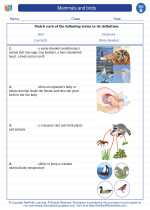Bones
Bones are a crucial part of the human body, providing structure, protection, and support to various organs and tissues. They are also involved in the production of blood cells and the storage of minerals such as calcium and phosphorus.
Structure of Bones
Bones are made up of both living tissues and non-living materials. The outer layer of a bone is called the periosteum, which contains blood vessels and nerves. Beneath the periosteum lies compact bone, which is dense and hard. Within the compact bone are small cavities containing bone marrow, where blood cells are produced. The innermost part of the bone is called spongy bone, which is less dense and has a honeycomb-like structure.
Functions of Bones
1. Support: Bones provide a framework for the body, allowing us to stand, move, and perform various activities.
2. Protection: Bones protect vital organs such as the brain, heart, and lungs from injury.
3. Movement: Muscles are attached to bones, and when the muscles contract, they pull on the bones, allowing us to move.
4. Blood cell production: Bone marrow is responsible for producing red and white blood cells as well as platelets.
5. Mineral storage: Bones store minerals like calcium and phosphorus, releasing them into the bloodstream as needed.
Types of Bones
There are five main types of bones in the human body:
1. Long bones - found in the arms, legs, fingers, and toes
2. Short bones - found in the wrists and ankles
3. Flat bones - found in the skull, shoulder blades, and ribs
4. Irregular bones - found in the spine and face
5. Sesamoid bones - small, round bones found in tendons (e.g., the patella or kneecap)
Bone Growth and Development
Bones develop and grow in a process called ossification. During childhood and adolescence, bones grow in length and width as a result of the growth plates at the ends of long bones. This process is regulated by hormones and nutritional factors.
Common Bone-related Terms
1. Osteoporosis - a condition characterized by a decrease in bone density, making the bones weak and susceptible to fractures.
2. Fracture - a break in a bone caused by trauma or stress.
3. Cartilage - a tough, flexible connective tissue found in some areas of the body, including the joints and the outer ear.
Study Guide
1. What are the functions of bones in the human body?
2. Name the five types of bones and provide an example of each.
3. Explain the process of bone growth and development in children.
4. Define osteoporosis and explain its effects on bone health.
5. Describe the structure of a bone and its different components.
.◂Science Worksheets and Study Guides Second Grade. Mammals and birds
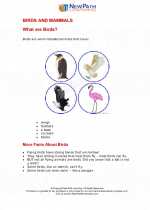
 Activity Lesson
Activity Lesson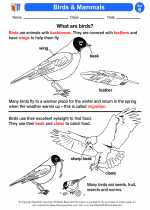
 Worksheet/Answer key
Worksheet/Answer key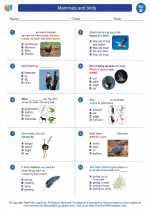
 Worksheet/Answer key
Worksheet/Answer key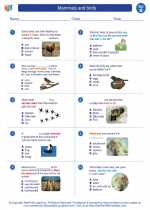
 Worksheet/Answer key
Worksheet/Answer key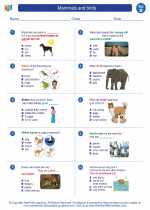
 Worksheet/Answer key
Worksheet/Answer key
 Vocabulary/Answer key
Vocabulary/Answer key